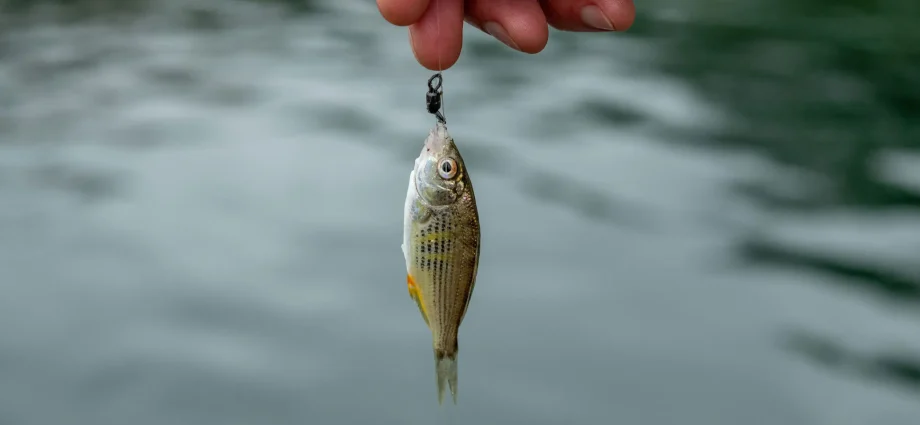Contents
Ram, ram – the name of anadromous or semi-anadromous fish of the carp family. From the point of view of ichthyologists, this is a subspecies of roach of the Azov-Black Sea basin. It differs somewhat from the freshwater form in a higher body and larger size. Local anglers often find many features of ramming from other forms of roach. But the main difference from related subspecies, and especially roach, is living in the Azov-Black Sea region. Due to the fact that the name – ram or vobla, people often associate with dried fish, sometimes there is confusion in determining the type of fish. On sale under this name, sometimes, you can find completely different fish, including bream and others. Ram sizes can reach a length of more than 40 cm and a weight of about 1.8 kg. These fish enter the rivers only for spawning, as a rule, they do not rise high upstream. During the spring run, there are massive fish kills, they are associated with changes in the water level in the river and weather conditions. The pre-spawning run of fish into the rivers begins even under the ice, so fishing can be very diverse. At present, a strong decrease in the number and size of the Azov population has been observed. This is associated with extreme forms of poaching (for example, uncontrolled harvesting of juveniles – “talovirka”) and environmental degradation, including changes in natural conditions in natural spawning grounds.
Ways to catch ram
The fish is of great commercial importance. Despite the shallowing and decrease in the population, the mass flow of fish in the spring attracts a large number of amateur fishermen. Fishing for rams, as well as for roach on the Volga, is an exciting and difficult activity. For this, various tackle is used: spinning, float and bottom fishing rods, fly fishing, “long casting” gear using artificial lures, winter fishing rods.
Catching rams on float tackle
Features of using float gear for ram fishing depend on the fishing conditions and the experience of the angler. For coastal fishing for all types of roach, rods for “deaf” equipment 5-6 m long are usually used. Match rods are used for long-distance casts. The choice of equipment is very diverse and is limited by the conditions of fishing, and not by the type of fish. As in any float fishing, the most important element is the right bait and bait.
Catching ram on the bottom gear
Ram, like all types of roach, respond well to bottom gear. Fishing with bottom rods, including feeder and picker, is very convenient for most, even inexperienced anglers. They allow the fisherman to be quite mobile on the pond, and because of the possibility of point feeding, quickly “collect” fish in a given place. Feeder and picker, as separate types of equipment, currently differ only in the length of the rod. The basis is the presence of a bait container-sinker (feeder) and interchangeable tips on the rod. The tops change depending on the fishing conditions and the weight of the feeder used. Nozzle for fishing can be any nozzle, both vegetable or animal origin, and paste. This method of fishing is available to everyone. Tackle is not demanding for additional accessories and specialized equipment. This allows you to fish in almost any water bodies. It is worth paying attention to the choice of feeders in shape and size, as well as bait mixtures. This is due to the conditions of the reservoir (river, bay, etc.) and the food preferences of local fish.
Baits
As for vobla, food plasticity is characteristic. Depending on the region and season, fish quickly adapt to local food sources. For fishing on bottom and float gear, traditional nozzles are used: animal and vegetable. For nozzles, worms, maggots, bloodworms, and various grains are used. It is very important to choose the right bait, which is added, if necessary, animal components. Fly fishing uses a variety of traditional lures. Most often, medium-sized flies are used on hooks No. 14 – 18, imitating familiar food for roach: flying insects, as well as their larvae, in addition, underwater invertebrates and worms.
Places of fishing and habitat
Taran is an anadromous, semi-anadromous form of roach living in the Azov-Black Sea basin. It enters the rivers for spawning, as a rule, it does not rise high. The most famous population in Russia is the Azov-Kuban region. The main part of life is spent in desalinated sea bays or, in search of food, moves along the coastline.
Spawning
Ram, like vobla, becomes sexually mature at 3-4 years. Spawns 5-6 times in a lifetime. Fish begin to spawn even under the ice. The mass run is just before spawning, which occurs at the end of March-April. The fish is stuffed into various sleeves, channels, yoriki. Spawning occurs in shallow water in vegetation, often on floods that dry up, destroying not only the eggs but also the spawning fish. At the time of spawning, the fish stops feeding, but because this period is somewhat extended and does not pass simultaneously, active fish may also be in the herd.










